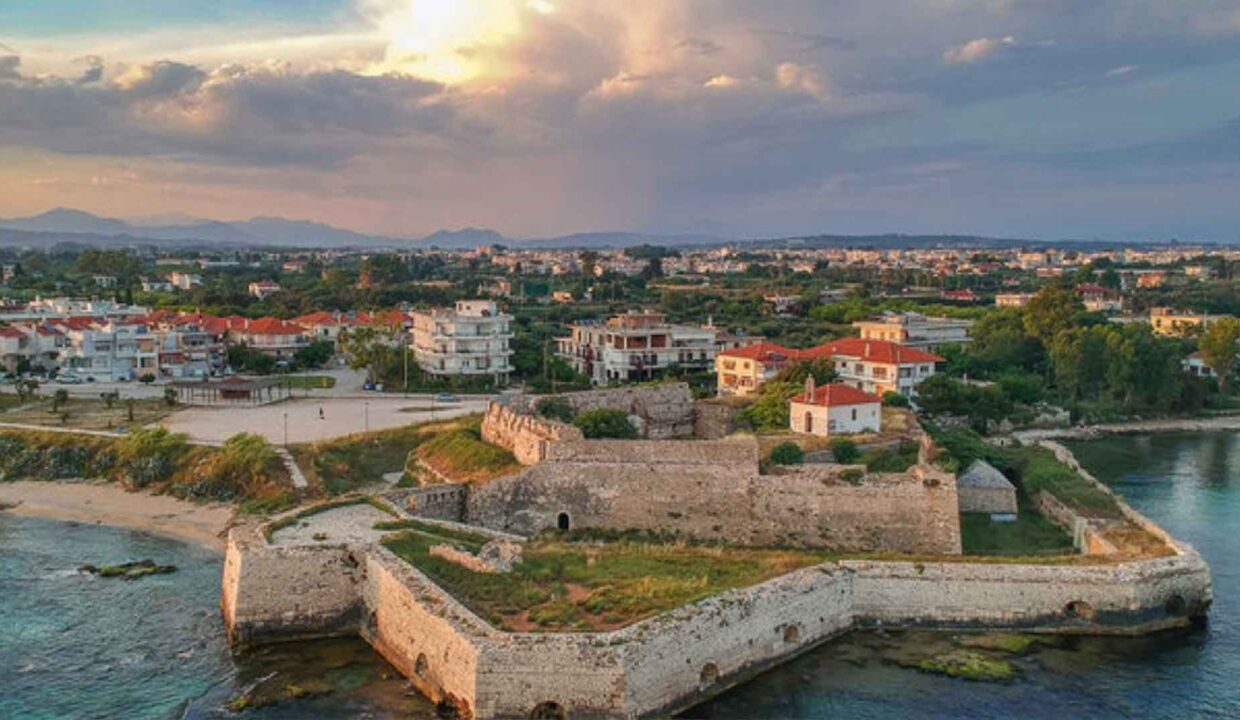
1. Castle of Pantokratoras
Οn the west of the city of Preveza, on the beach and at the place where the shore turns towards the Ionian Sea, the fortress of Pantokratoras is erected. Τhe fortress was named after the church of Pantokratoras that was built there, during the French occupation of the city, before its construction and it gave its name to the neighbouring settlement. The Europeans used to call it “Enetic” or “Venetian” castle. The Turkish “uc kale”, edge, end, border.
Pantokratoras castle was built in the beginning of the 19th century by Ali Pasha, on the basis of a plan drawn by the French engineer Vaudoncourt. However, that mission concealed some motives of the strategy of French in Epirus and Albania. Its location served to completely control the navigation at the entrance of the Amvrakikos gulf.
2. St. George’s Castle
St. George’s Castle is an Ottoman fortification located in the city of Preveza, northwestern Greece. It was built in 1807, during the rule of Ali Pasha of Ioannina over the region (1806-1820), and it was constructed on plans drawn by the French engineer Frédéric François Guillaume de Vaudoncourt (1772-1845).
The castle was built in 1807, when the region was governed by Ali Pasha of Tepeleni, a semi-autonomous Ottoman ruler of Epirus. It was the first major architectural intervention of Ali Pasha in Preveza, after he recaptured it in late November 1806.
St. George’s castle, as it was named after 1912, was designed by French engineers, who also oversaw the construction of the fort. It was constructed at the southern edge of Preveza in order to defend the narrow water channel leading from the Ionian Sea into the Gulf of Arta.
3. Saint Andrew’s Castle
The fortress of St. Andrew is the only one which dates back to the Venetian period: the current set of walls and buildings however is due to an 1807 reconstruction by Ali Pacha and to many later modifications. Some worn out reliefs portraying a man and a beast were placed on the walls; because their design is very naive, it is unlikely that they came from Nikopolis (similar reliefs can be seen also in the gates of Ioannina).
4. Castle of Parga
The Parga Castle is a medieval hilltop citadel complex in the town of Parga, Epirus, Greece. Located on the top of a hill overlooking the town, it has been an important landmark since the 15th century, due in part to the strong fortifications used to protect the town from invasions from land and sea. Located on a strategically placed rocky peninsula overlooking the sea on three sides, and the town on the forth.
In antiquity the area around the castle was inhabited by the Greek tribe of the Thesprotians. The ancient town of Toryne was probably located here. Before the strong castle of Parga was built (which survives today), the inhabitants of Parga tried to keep the fortified city, which was exposed to the sea, so that they could face the invaders. In this effort they had built the first fortifications with the help of the Normans initially in the 11th century by the residents of Parga to protect their town from pirates and later the Ottomans. In the 15th century, as Ottoman control of the region increased, the Venetians rebuilt the castle to fortify the area.
